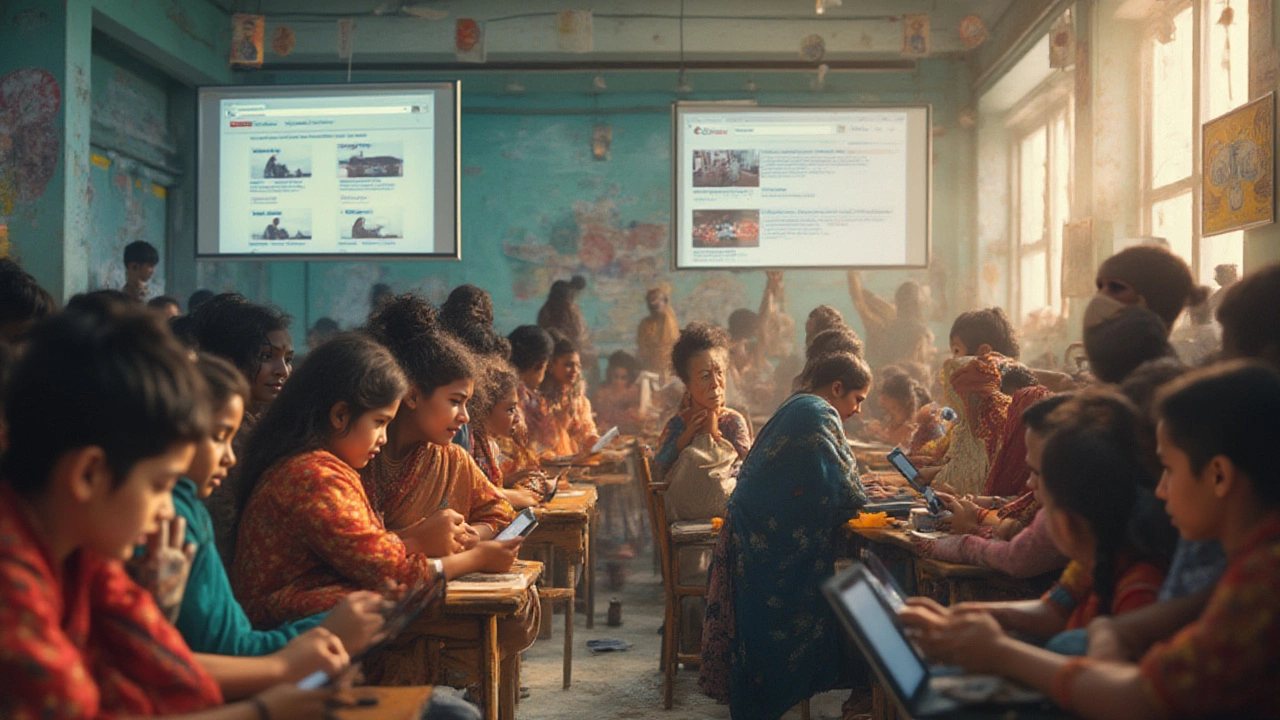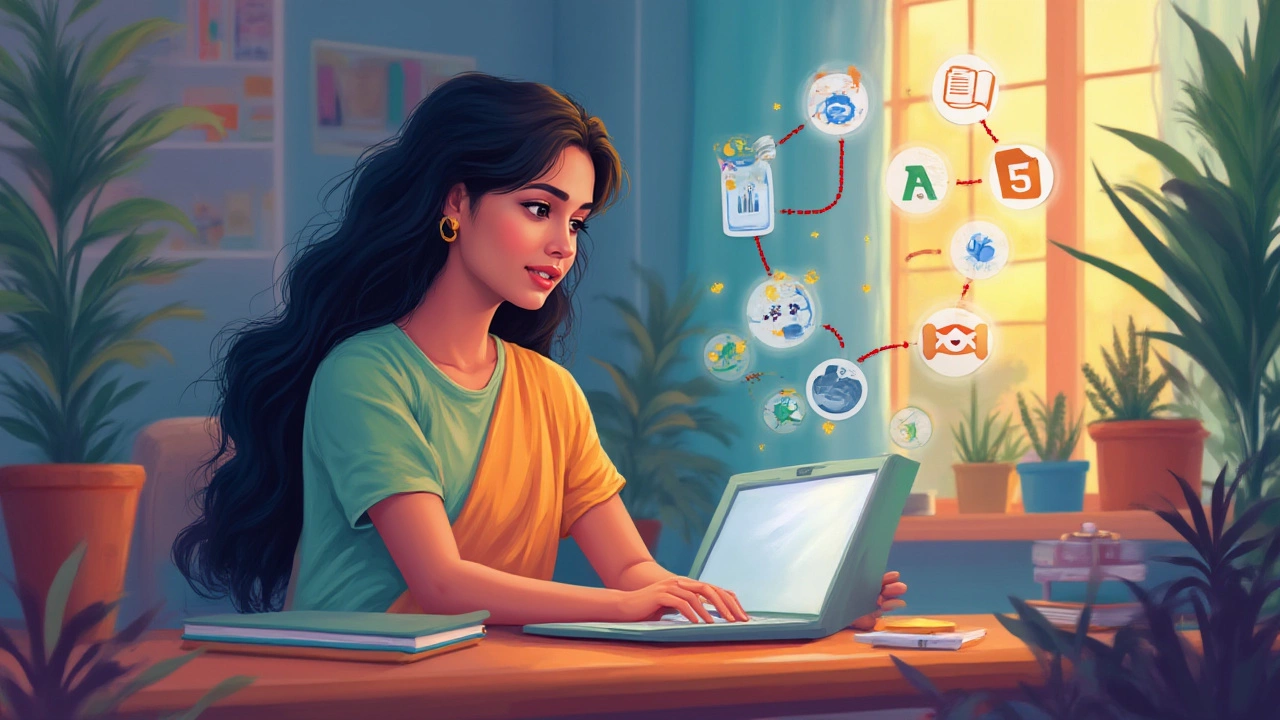Quick question—when was the last time you Googled how to do something, and it actually worked out? Maybe you learned how to unclog a sink, code in Python, or make sourdough bread. Now here’s something wild: If you get your answers (and skills) from Google almost daily, does that make Google an e learning platform? Or is it just a massive library with a search bar? Someone could argue Google is every student’s favorite teacher. Someone else might say it's just a directory pointing to the ‘real’ classrooms elsewhere. So, where does the truth land? Let’s roll up our sleeves and figure it out.
What Counts as an E-Learning Platform?
Honestly, the learning world is packed with buzzwords. “E-learning platform” usually means something like Coursera, Udemy, or Khan Academy. You sign up, take actual courses, get quizzes and feedback, sometimes even a certificate. Everything is organized—video lectures, reading material, assignments, progress tracking—the whole classroom experience, but digital. These platforms grab content from universities, businesses, or experts, and package everything neatly. If you want to learn Python, you’re led through the process step-by-step. Miss an answer? The platform tells you why. Want to flex your badge or certificate on LinkedIn? E-learning platforms have you covered.
Now, look at Google. There's no “Python 101” on there, with built-in lectures and quizzes. Instead, Google sends you to YouTube playlist, blogs, Stack Overflow threads, and maybe some PDFs hiding behind a random .edu site. You don’t get a progress bar, and no one reminds you to finish. Google doesn’t create its own educational content (except through things like Google Digital Garage or Grow with Google, and even those are separate products). It doesn’t grade your homework or issue certificates unless you sign up for a separate Google course. So, if “e-learning platform” means course structure and user tracking, Google misses the mark right away.
But here’s the twist: Formal definitions aside, millions rely on Google for learning—way more than any single e-learning platform. As of 2024, Google Search handled over 8.5 billion searches per day, and educational topics are a chunk of that. The difference? On Google, you design your own class. You decide what comes next, where to hunt for answers, and you make your own choices about which sources feel trustworthy. You’re a little like Indiana Jones with a browser.
Another wild fact: A study by Pew Research showed 87% of US adults used the internet to teach themselves something new in the past year, and Google was their best friend for that. Even teachers share Google links as resources in official classrooms. So while Google doesn’t organize the lessons, people use it as a launchpad—kind of a superpowered textbook table of contents for the world.

Google as Your Personal Learning Toolbox
If we’re honest, Google probably gets more “students” per month than any university on earth. But why do people treat Google like a classroom, anyway? The secret isn’t just search results. Google wraps up a whole bundle of tools, and each of them can turn a curious afternoon into a serious study binge.
- Google Scholar: Want to dig into scientific articles, research papers, or advanced textbooks—free? Google Scholar is the go-to. It even lets you track citations, save papers, and build your own private library of knowledge.
- YouTube (owned by Google): Let’s be honest, how many times have you learned something watching a YouTube video? Tutorials, classes, university lectures—it’s all there. Starting in 2023, YouTube rolled out "Courses," letting creators make paid, structured learning modules on everything from algebra to guitar solos. Over 2 billion logged-in users visit YouTube every month; a solid chunk searches for education.
- Google Classroom: Schools and independent tutors use this free platform to organize assignments, create quizzes, upload resources, and give feedback—basically, a digital home for lessons. Popular after the COVID-19 pandemic hit, it now has more than 150 million active users.
- Google Docs, Sheets, Slides: These aren’t just Word and Excel clones in the cloud. Imagine you’re working on a group project, writing essays together, or solving practice problems as a class—all in real time, from anywhere in the world. Professionals and students do it every day.
- Google Digital Garage & Grow with Google: Actual free courses and certifications on digital marketing, coding, and job skills, created by Google. Materials here are structured and credentialed.
- Google Arts & Culture: Explore museum collections, historical sites, and virtual tours. Perfect for history or art nerds. Doesn’t hand out certificates but definitely deepens your curiosity.
Pretty crazy, right? Most people use these tools piecemeal and don’t even realize they’re building their own curriculum as they go. So, while Google isn’t a "true" e-learning platform in the classic sense, it’s the digital Swiss Army knife for learning basically anything. The catch is, it’s up to you to connect the dots: There’s no neat syllabus or completion badge at the finish line (unless you’re tackling Digital Garage or Classroom with a teacher).
Now, not everything is rainbows. Google doesn’t weed out bad info for you. It can’t verify whether some random Quora answer or a 2012 blog post is actually correct. That’s on the learner. You have to flex your critical thinking skills every time you click a search result. Google’s search algorithms try to push quality sources to the top, but sometimes weird SEO tricks or outdated answers slide through. Ever noticed how headlines like “BEST WAY TO LEARN FRENCH IN 10 DAYS” seem to promise a magic bullet? That’s Google’s jungle—the good, the bad, and the sketchy, all together. Sharpening your info-filtering instincts becomes a must if you’re using Google as your classroom.
There’s also the distraction danger. Looking up something as innocuous as “the structure of an atom” might lead you down a clickhole of memes, unrelated news, and shopping links. Unlike guided courses, Google doesn’t have bumpers. You chart your own learning path, but there’s no one to yank you back if you veer off course. Self-motivation becomes the name of the game, and some folks love that freedom, while others drown in tabs.
Handy tip? If you want to actually use Google like a real e-learning platform, treat it like one. Make a list of skills you want to master. Search with specific questions ("how to solve quadratic equations, step by step") instead of just “quadratic equations.” Pick top-rated resources or official sites (.org, .edu, or well-known experts). Take notes in Google Docs as you go. If possible, join online forums or Reddit communities to get feedback and stay accountable.

How Google Shapes Modern Learning—and How to Get the Most from It
If you ask teachers, the most shocking change in classrooms in the last decade isn’t flashy VR headsets or even e-learning courses. It’s how students whip out their phones under the desk and search Google anytime they’re stuck. Learning styles have quietly morphed. Memorization’s not king anymore—information hunting, verifying, and applying is. When instant answers are a click away, students spend less time cramming facts and more time figuring out what to do with that knowledge.
This shift isn’t just about schools. People with all sorts of goals—job hunters, hobbyists, DIY tinkerers—jump onto Google to jumpstart learning. In a LinkedIn Learning survey last year, over 60% of working adults said they used a “Google search plus free resources” combo to upskill, rather than signing up for formal courses. Career changes and promotions are actually happening because people cobble together self-education using Google, YouTube, and a couple MOOCs.
Tons of experts now share free guides and lessons on their own blogs instead of locking content away on paid platforms. For example, CS50, Harvard's famous computer science course, is fully Google-searchable and free to audit on YouTube. You end up learning the same thing as someone who paid for a structured MOOC, if you’re motivated and organized enough.
Google is also pushing into direct credentialing. The Google Career Certificates program (launched with platforms like Coursera) now lets you earn job-ready credentials—in data analytics, IT support, user experience design—recognized by big brands. While these aren't built into regular Google Search, they’re proof Google sees value in official learning channels. But outside of these structured programs, you’re on your own.
Here are some real-world techniques to really squeeze the most out of Google for learning:
- Type exact questions or symptoms—just like you’d ask a teacher (“Why won’t my code run Python list index error?”) instead of broad topics.
- Bookmark trusted sites. After a while, you’ll learn which resources are reliable. Save them in a folder for quick reference.
- Use Google Books for older textbooks. Tons of out-of-print classics are hidden there, especially for deep-dive learners.
- Leverage voice queries. Sometimes speaking your question brings up more relevant video-based or how-to results.
- Set a timer for focused learning sprints so you don’t get sidetracked by unrelated searches.
- Follow up with practice—search for quizzes, sample questions, or project-based tutorials to test what you’ve picked up.
All in all, Google is like the world’s most chaotic, bountiful library—no librarian, no overdue fines, but no handholding. It isn’t an e-learning platform by the book, yet it’s rewritten the rules of how we learn just by existing. The next time someone asks if Google is an e-learning platform, you might just say, “No, but it’s the only school you carry in your pocket.”


